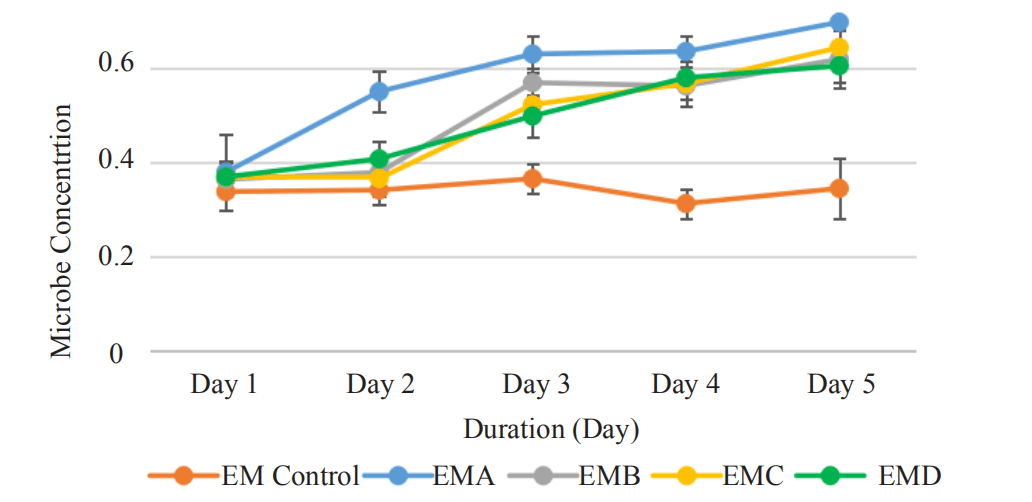Investigation on the Efficiency of Effective Microorganisms for Polluted Water Treatment
DOI:
https://doi.org/10.37256/amtt.212021683Keywords:
effective microorganisms, water quality, polluted water treatmentAbstract
Water pollution, mainly caused by rapid industrialization and population growth, has been one of the major threats to the sustainability of living organisms. The urgency to preserve and restore the freshwater system has never been clearer, as only 1% of the world's total water supply is suitable for human consumption. Recently, biological treatment using Effective Microorganisms Activated Solution (EMAS) shows potential in reducing pollution in wastewater and river water bodies. Thus, this study aims to assess the water quality of water bodies in Malaysia, namely Kerayong River and Pandan Perdana Lake, and assess the effectiveness and optimum concentration of EMAS on polluted water. The results obtained showed that high levels of NO2-, NO3- and NH3 were found in excess in Kerayong River, indicating pollution occurs whereas none of the tested parameters were detected in excess in Pandan Perdana Lake, hence showing it was not contaminated. The effectiveness of EMAS on synthetic wastewater was assessed through the measurement of few parameters which include Ca2+, Na+, K+, NO3-, NH4+, pH and microbe concentration. It was found that in all concentrations of EMAS, ammonium ion concentration was effectively reduced, and microbe concentration was increased (p < 0.05). EMA (1 mL/L) and EMB (0.2 mL/L) samples had significantly lower nitrate concentration compared to the control samples. EMAS were not capable to reduce dissolved water minerals such as Ca2+, Na+ and K+, but further contributes to the increase of dissolved minerals in the water. Whereas no significant effect of EMAS on pH of water samples was observed as all water samples fall within pH of 4.31 to 4.56 throughout 5 days. EMAS concentration of 1 mL/L was the optimum concentration for reducing ammonium and nitrate concentration.


